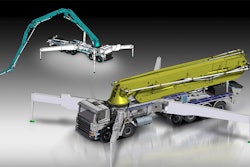
Scholastic book fairs are one of the most anticipated events each year in elementary and middle schools across the country. Students arrive to find their schools’ lobbies or cafeterias filled, as if by magic, with hundreds of wonderful books.
Except the process of getting the books into the schools, from Scholastic’s perspective, wasn’t so magic.
Managing the books as they moved from school to school proved to be an incredibly complicated inventory challenge. Traditional, mostly manual picking solutions couldn’t keep up as the number of schools hosting fairs grew worldwide.
It would be easy to just add some automation into Scholastic’s supply chain and call it a day. But a closer look at the process revealed that a few tweaks—combined with a minimal investment in new products—would completely transform the distribution strategy.
A process-oriented approach mindset favors a strategic examination of process over simply inserting a product. It’s a holistic look at a problem that seeks efficiencies by scrutinizing how each part of a system works together.
In Scholastic’s case, productivity increased by 15 percent while also improving inventory visibility, reporting and accountability. Books could be monitored through a simple software solution without ever returning to the pick face in the distribution center. The changes in process eliminated two touches as books moved from one fair to another.
Driven by Data
Process-oriented teams start, as they did in Scholastic’s case, by analyzing months or even years of data to determine how products can arrive on shelves and in customers’ hands more efficiently. Companies can find a huge strategic advantage from fine-tuning supply chain logistics through tweaks that reveal themselves through a thorough examination.
A meat supplier wants to transform its supply chain, which is equipped for high volumes of product, to be better suited for specialty services. A team analyzed a year’s worth of data, interviewed executives to understand the company’s business requirements and conducted a series of brainstorming sessions.
Based on the analysis and feedback, the team developed a process that eased bottlenecks in the supply chain, and improved the sequence of product on pallets and within trucks to minimize labor in the downstream distribution network. While a new conveyor or other piece of equipment may help a little bit, a larger look at processes had a massive impact on the company’s ability to serve customers faster and with greater agility.
An analytical, process-focused approach takes time, which means that partners get to know a company’s business inside and out. It’s a long-term commitment as opposed to a transaction. As many as a dozen people may work on a project before they accept a penny from a company, all the while bringing to the table a breadth of industry experiences and insights that eventually lead to the best solution.
Products as Part of a Process
Product-oriented teams are often quick to recommend automation even when a change in process is actually a more functionally and cost-efficient solution. It’s not unusual for e-commerce facilities to automate 100 percent of their operations, but in many cases, they’d get a better payback from a hybrid solution that engages automation as part of an intelligent system.
Some companies realize only after they spend a lot of money on technology that, with a strategic approach, they could save significant dollars on a better solution. The key is to work with a partner who helps address your company’s individual needs. Products often play a role in the solution, but they deliver even better outcomes when used within a carefully considered framework.
A nationally known snack food manufacturer, for example, needed to improve productivity and increase safety in a small space with a low ceiling at a plant. Industrial robots were added to automate palletizing, but that was only part of the solution.
As part of the robotic palletizing installation, engineers conducted a study to review the company’s shelf-keeping unit (SKU) scheduling. The team developed a unique tool that helped plant managers schedule production more efficiently to optimize existing equipment that functioned alongside the new products. The project cost significantly less than if the company replaced its entire palletizing infrastructure, but it also delivered a safer, more productive manufacturing space.
For other projects with this company, the team brought insights from beer distribution to potato chip handling to help streamline deliveries. The partner used expertise from many different industries to deliver a sequencing solution considered unconventional for snack foods, thereby greatly reducing downstream labor.
Companies that are only equipment suppliers always suggest solving a problem with products. But when you work with a company that seeks solutions, they go so far as to suggest a competitor’s product if it’s the right match. That attitude speaks to a deep understanding of the industry and expertise in best practices that can only be gleaned from working with a wide range of clients.
A process-based approach keeps companies’ long-term best interests in mind. The strategy doesn’t go out of fashion just because a new technology is on the market. It doesn’t wear out from overuse or require expensive repairs. It provides a foundation for better, more efficient performance that delivers returns long into the future.
And that’s the differentiator companies should seek: a partner who works as an advisor leading it toward a solution that elevates the business.













